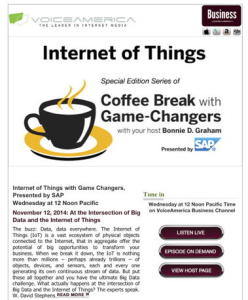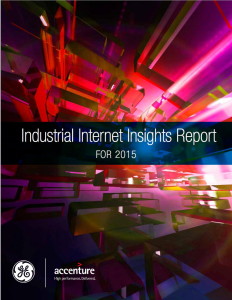Pardon a political analogy, Just as the recent indictment of 13 Russians in the horrific bot campaign to undermine our democracy (you may surmise my position on this! The WIRED article about it is a must read!) finally provided objective information on the plot, so too Kasmir Hill’s and Surya Matu’s excruciatingly detailed “The House That Spied on Me” finally provides objective information on the critical question of how much personal data IoT device manufacturers are actually compiling from our smart home devices.
This is critical, because we’ve previously had to rely on anecdotal evidence such as the Houston baby-cam scandal, and that’s not adequate for sound government policy making and/or advice to other companies on how to handle the privacy/security issue.
Last year, Hill (who wrote one of the first articles on the danger when she was at Forbes) added just about every smart home you can imagine to her apartment (I won’t repeat the list: I blush easily…) . Then her colleague, Matu, monitored the outflow of the devices using a special router he created to which she connected all the devices:
“… I am basically Kashmir’s sentient home. Kashmir wanted to know what it would be like to live in a smart home and I wanted to find out what the digital emissions from that home would reveal about her. Cybersecurity wasn’t my focus. … Privacy was. What could I tell about the patterns of her and her family’s life by passively gathering the data trails from her belongings? How often were the devices talking? Could I tell what the people inside were doing on an hourly basis based on what I saw?”
The answer was: a lot (I couldn’t paste the chart recording the numbers here, so check the article for the full report)!
As Matu pointed out, with the device he had access to precisely the data about Hill’s apartment that Comcast could collect and sell because of a 2017 law allowing ISPs to sell customers’ internet usage data without their consent — including the smart device data. The various devices sent data constantly — sometimes even when they weren’t being used! In fact, there hasn’t been a single hour since the router was installed in December when at least some devices haven’t sent data — even if no one was at home!
BTW: Hill, despite her expertise and manufacturers’ claims of ease-of-setup, found configuring all of the devices, and especially making them work together, was a nightmare. Among other tidbits about how difficult it was: she had to download 14 different apps! The system also directly violated her privacy, uploading a video of her walking around the apartment nude that was recorded by the Withings Home Wi-Fi Security (ahem…) Camera with Air Quality Sensors. Fortunately the offending video was encrypted. Small comfort.
Hill came to realize how convoluted privacy and security can become with a smart home:
“The whole episode reinforced something that was already bothering me: Getting a smart home means that everyone who lives or comes inside it is part of your personal panopticon, something which may not be obvious to them because they don’t expect everyday objects to have spying abilities. One of the gadgets—the Eight Sleep Tracker—seemed aware of this, and as a privacy-protective gesture, required the email address of the person I sleep with to request his permission to show me sleep reports from his side of the bed. But it’s weird to tell a gadget who you are having sex with as a way to protect privacy, especially when that gadget is monitoring the noise levels in your bedroom.”
Matu reminds us that, even though most of the data was encrypted, even the most basic digital exhaust can give trained experts valuable clues that may build digital profiles of us, whether to attract us to ads or for more nefarious purposes:
“It turns out that how we interact with our computers and smartphones is very valuable information, both to intelligence agencies and the advertising industry. What websites do I visit? How long do I actually spend reading an article? How long do I spend on Instagram? What do I use maps for? The data packets that help answer these questions are the basic unit of the data economy, and many more of them will be sent by people living in a smart home.”
Given the concerns about whether Amazon, Google, and Apple are constantly monitoring you through your smart speaker (remember when an Echo was subpoenaed in a murder case?), Matu reported that:
“… the Echo and Echo Dot … were in constant communication with Amazon’s servers, sending a request every couple of minutes to http://spectrum.s3.amazonaws.com/kindle-wifi/wifistub-echo.html. Even without the “Alexa” wake word, and even when the microphone is turned off, the Echo is frequently checking in with Amazon, confirming it is online and looking for updates. Amazon did not respond to an inquiry about why the Echo talks to Amazon’s servers so much more frequently than other connected devices.”
Even the seemingly most insignificant data can be important:
“I was able to pick up a bunch of insights into the Hill household—what time they wake up, when they turn their lights on and off, when their child wakes up and falls asleep—but the weirdest one for me personally was knowing when Kashmir brushes her teeth. Her Philips Sonicare Connected toothbrush notifies the app when it’s being used, sending a distinctive digital fingerprint to the router. While not necessarily the most sensitive information, it made me imagine the next iteration of insurance incentives: Use a smart toothbrush and get dental insurance at a discount!”
Lest you laugh at that, a dean at the BU Dental School told me much the same thing: that the digital evidence from a Colgate smart brush, in this case, could actually revolutionize dentistry, not only letting your dentist how well, or not, you brushed, but perhaps lowering your dental insurance premium or affecting the amount your dentist was reimbursed. Who woulda thunk it?
Summing up (there’s a lot of additional important info in the story, especially about the perfidious Visio Smart TV, that had such a company-weighted privacy policy that the FTC actually forced it to turn it off the “feature” and pay reparations, so do read the whole article), Hill concluded:
“I thought the house would take care of me but instead everything in it now had the power to ask me to do things. Ultimately, I’m not going to warn you against making everything in your home smart because of the privacy risks, although there are quite a few. I’m going to warn you against a smart home because living in it is annoying as hell.”
In addition to making privacy and security a priority, there is another simple and essential step smart home (and Quantified Self) device companies must take.
When you open the box for the first time, the first thing you should see must be a prominently displayed privacy and security policy, written in plain (and I mean really plain) English, and printed in large, bold type. It should make it clear that any data sharing is opt-in, and that you have the right to not agree, and emphasize the need for detailed, unique passwords (no,1-2-3-4 or the ever-popular “password” are not enough.
Just to make certain the point is made, it needs to be at the very beginning of the set-up app as well. Yes, you should also include the detailed legalese in agate type, but the critical points must be made in the basic statement, which needs to be reviewed not just by the lawyers, but also a panel of laypeople, who must also carry out the steps to make sure they’re really easily understood and acted on. This is not just a suggestion. You absolutely must do it or you risk major penalties and public fury.
Clearly, this article gives us the first objective evidence that there’s a lot more to do to assure privacy and security for smart homes (and that there’s also a heck of a lot of room for improvement on how the devices play together!), reaffirming my judgement that the first IoT Essential Truth remains “make privacy and security your highest priority.” If this doesn’t get the focus it deserves, we may lose all the benefits of the IoT because of legitimate public and corporate concern that their secrets are at risk. N.B.!


